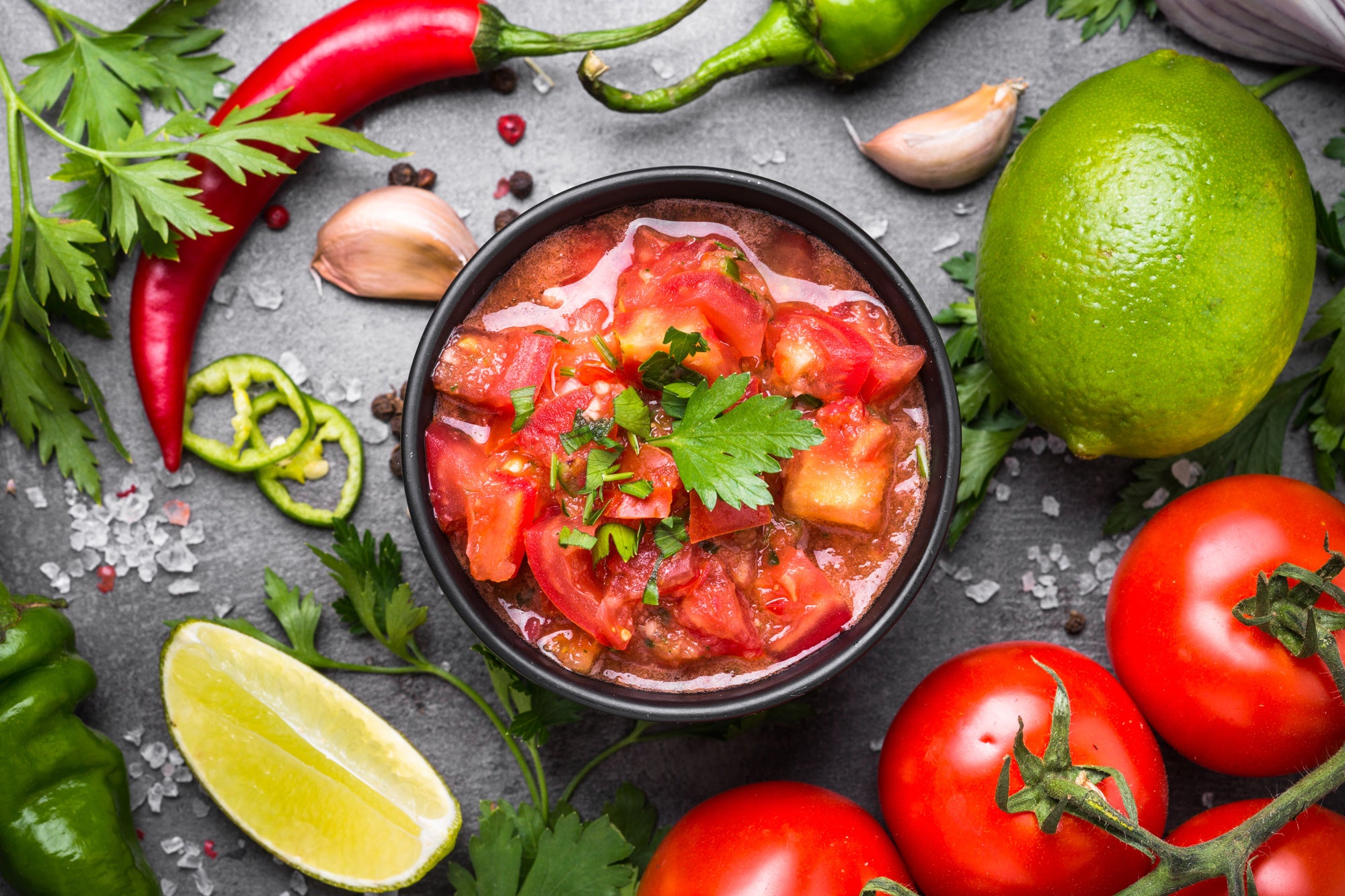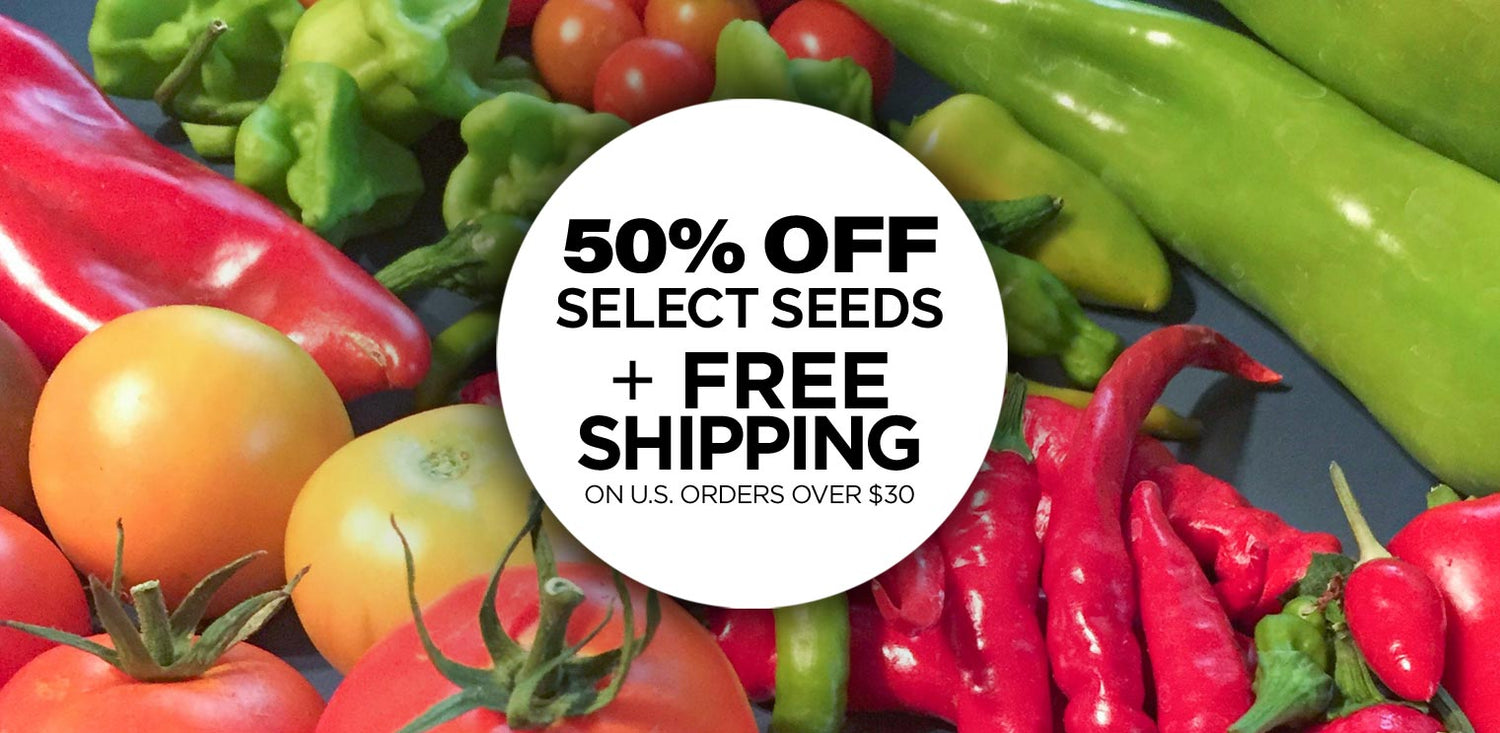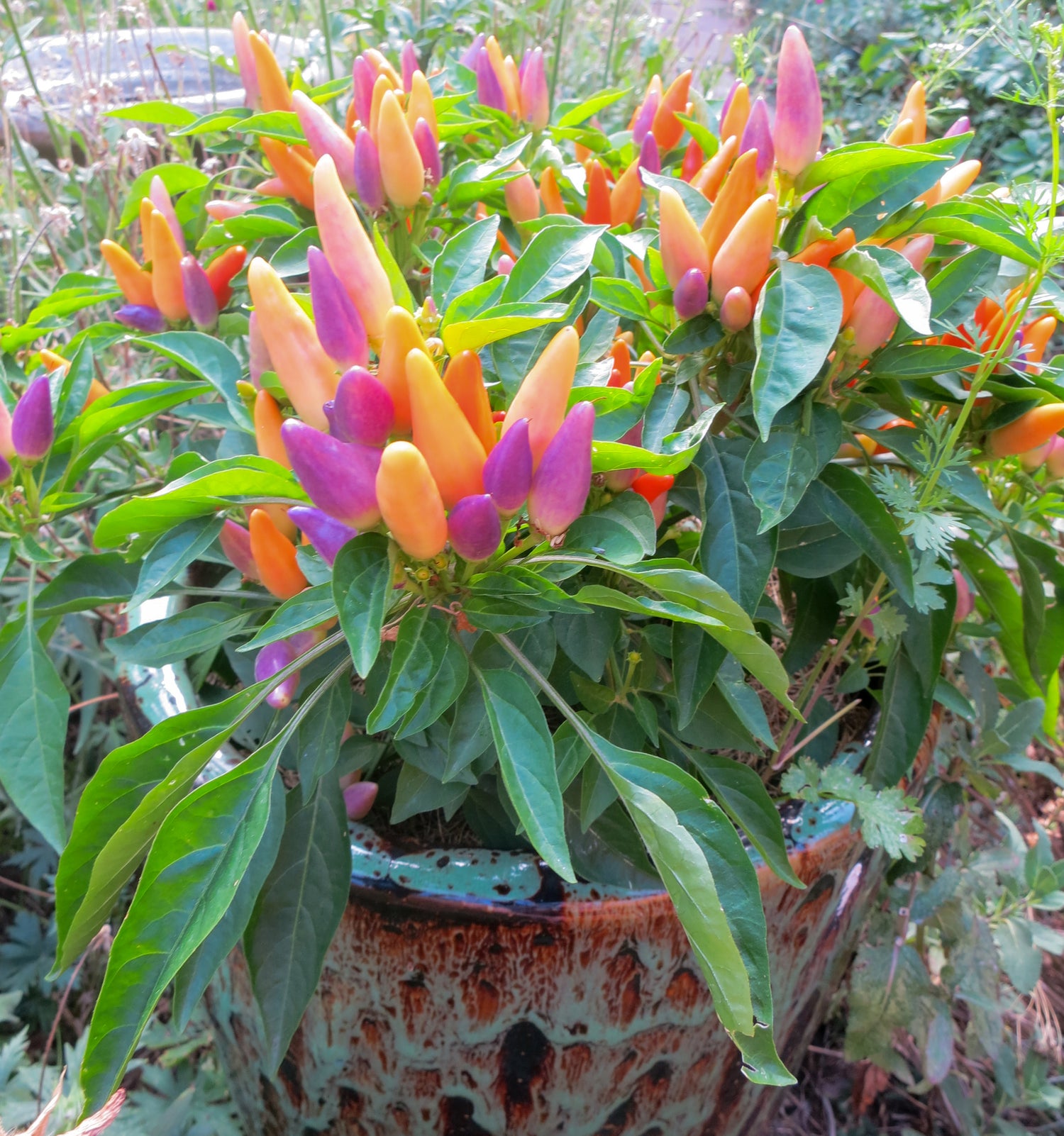

Since we grow so may peppers from seed, including hot peppers and super hot peppers like the Carolina Reaper, we love to make hot sauce.
Fermented hot sauce is something we're new to – and we recently added a Fermentation Crock to our kitchen lineup! This large ceramic pot has a lid that sits in a "water seal" channel that can be kept filled with water. This prevents air from entering the crock once the water “seal” is poured, but still allows for the CO2 created during fermentation to easily bubble out. The crock also came with two weights to hold the ingredients under the brine.
These water-sealed Fermentation Crocks are great for making hot sauce as you don't have to "burb" them, like you do with glass jars.

Fermentation crocks with water seals are ideal as they cut down on surface molds or yeasts. They are perfect for hot sauce fermenters who want to set it and forget it – and not worry about exploding contents upon opening from lack of burping. These are also great for people who want to make larger batches of hot sauce, pickles, or sauerkraut.
Our fermentation crock was made by a talented ceramic artist, Kate Inskeep, check out her crocks in various sizes here: kateinskeep.com/fermentation-crocks
Note: This truly is a hands-free fermentation crock – in fact, don't open the crock as that lets air in, so it's best to only open it once you're done with the fermentation process. Do make sure that the water channel has water, we find in the arid west that we have to fill it every few days to a week.
Fermented vs unfermented Hot Sauce:
Fermented hot sauce is created by soaking peppers and other vegetables in brine to ferment over time. Fermented hot sauces have a more lively flavor, afterall, it's alive! People ferment hot sauces over time, anywhere from a week to several weeks to develop the tangy flavor. Once the hot sauce is fermented to your liking, you can store it in the refrigerator for up to a year.
Simple Fermentation Crock Hot Sauce Recipe:
Ingredients:
1 lb organic hot peppers (big bowl)
(Yes, organic works best for fermentation,
of course we love homegrown hot peppers best!)
3-6+ Garlic Cloves
1 Red or White Onion, chopped
2.5 Tablespoon iodine-free salt,
dissolved in 4 cups room temperature water
2-3 Carrots, cut lengthwise
Wash and destem peppers. Toss in crock. Slice onion, and crush garlic cloves & peel, then toss in crock. We like to fit as many hot peppers as we have into the crock, we also like to add other veggies like carrots, garlic, onion, herbs or even fruit to give it more flavor.
After dissolving salt in water, pour brine over veggies, then make sure they are all submerged with ceramic weights. We also had to use a plastic bag to keep all the smaller peppers from floating up around the weights. You want to make sure all of the vegetables are fully submerged to prevent mold. Ideally, it is good to fill the fermentation crock near to the top to cut down on the amount of air.
Pour water into the moat (about halfway), then place the lid on, making sure the water seal is complete. Add water to the moat as it evaporates. Try to resist opening the fermentation crock lid, as that exposes it to air, which is undesirable. What's nice about fermentation crocks is that they are self-burping, so you don't have to worry about pressure build up as you do with jars.
After 2 to 8 weeks, the fermentation should be complete. The longer you ferment the peppers, the more tangy the hot sauce will get!
Drain the ingredients, reserving the brine liquid, and process the vegetables and peppers in a food processor until smooth. Add as much of remaining brine as desired, then pour into disinfected bottles or jars to store in the fridge.
Notes about Yeast & Mold:
You may see some film floating on the surface of your brine, this is normally Kamh yeast. The yeast will float on top and make the brine cloudy – but don't worry, this is a normal part of the fermentation process and is nothing to worry about. Kamh Yeast can look stringy, wrinkled and film-like on the surface of the brine, it is usually white to off-white in color, and it's not fuzzy. You can safely consume yeast, but it does affect the flavor somewhat, so we typically scoop out the yeast floating on top and discard it.
However, if you see mold growing, especially if it is growing on any of the vegetables or peppers that may have floated up and been exposed to the air, this is not good and you will need to throw away the batch.
Not sure if it's mold or yeast? Here are the common signs that lactofermentation has gone wrong:
- Rotten smell or rancid flavor
- Fuzzy mold growth on surface
So if you see anything fuzzy growing, discard the batch. This is not common, especially if you don't have any vegetables floating and exposed to the air. Using Fermentation Crocks with water seals for hot sauce helps cut down on the possibility of mold as they are sealed from the air.
Enjoy Fermentation for Flavor & Health:
Enjoy your fermented hot sauce, we're sure you'll find that the flavors created by fermentation are delicious, and they're good for you, too! Many popular hot sauces like Tabasco to Sriracha are made by fermentation, because the fermentation process gives hot sauces a bright acidity and complex flavor that develops slowly with time. Like yogurt and kombucha, fermented hot sauce is full of healthy probiotics, so it's really good for you!


Above: Peppers fermented in the brine for about 2 weeks. This was our last batch of peppers at the end of the season, so they didn't fill the pot completely, which wasn't ideal, but it still turned out great. They smelled delicious, we scooped off a little of the yeast growing on top, then drained the peppers, reserving the brine, and put them in the food processor to blend them until smooth, adding brine to get the desired consistency.

And voila, the end result:




















